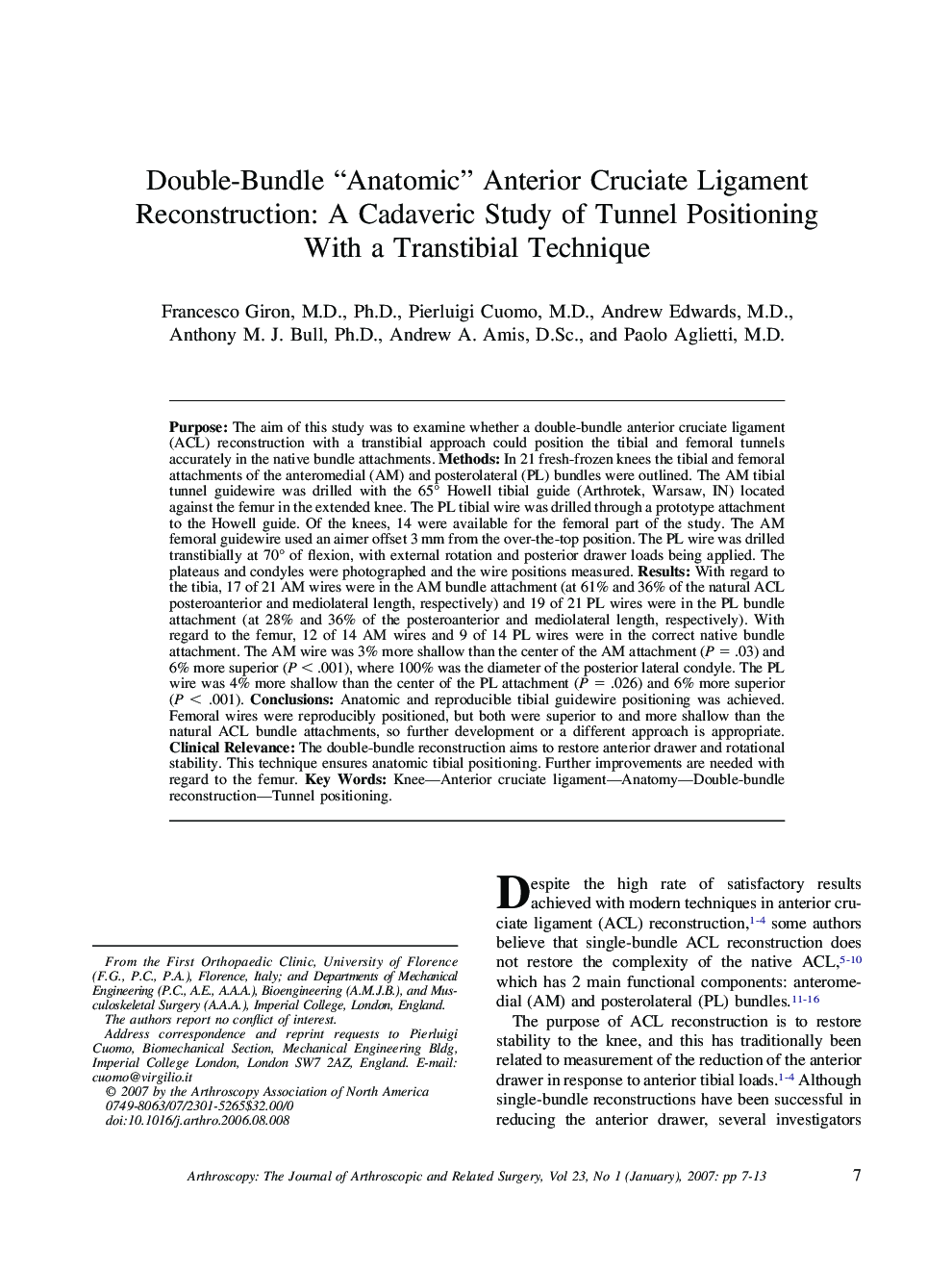| Article ID | Journal | Published Year | Pages | File Type |
|---|---|---|---|---|
| 4047211 | Arthroscopy: The Journal of Arthroscopic & Related Surgery | 2007 | 7 Pages |
Purpose: The aim of this study was to examine whether a double-bundle anterior cruciate ligament (ACL) reconstruction with a transtibial approach could position the tibial and femoral tunnels accurately in the native bundle attachments. Methods: In 21 fresh-frozen knees the tibial and femoral attachments of the anteromedial (AM) and posterolateral (PL) bundles were outlined. The AM tibial tunnel guidewire was drilled with the 65° Howell tibial guide (Arthrotek, Warsaw, IN) located against the femur in the extended knee. The PL tibial wire was drilled through a prototype attachment to the Howell guide. Of the knees, 14 were available for the femoral part of the study. The AM femoral guidewire used an aimer offset 3 mm from the over-the-top position. The PL wire was drilled transtibially at 70° of flexion, with external rotation and posterior drawer loads being applied. The plateaus and condyles were photographed and the wire positions measured. Results: With regard to the tibia, 17 of 21 AM wires were in the AM bundle attachment (at 61% and 36% of the natural ACL posteroanterior and mediolateral length, respectively) and 19 of 21 PL wires were in the PL bundle attachment (at 28% and 36% of the posteroanterior and mediolateral length, respectively). With regard to the femur, 12 of 14 AM wires and 9 of 14 PL wires were in the correct native bundle attachment. The AM wire was 3% more shallow than the center of the AM attachment (P = .03) and 6% more superior (P < .001), where 100% was the diameter of the posterior lateral condyle. The PL wire was 4% more shallow than the center of the PL attachment (P = .026) and 6% more superior (P < .001). Conclusions: Anatomic and reproducible tibial guidewire positioning was achieved. Femoral wires were reproducibly positioned, but both were superior to and more shallow than the natural ACL bundle attachments, so further development or a different approach is appropriate. Clinical Relevance: The double-bundle reconstruction aims to restore anterior drawer and rotational stability. This technique ensures anatomic tibial positioning. Further improvements are needed with regard to the femur.
